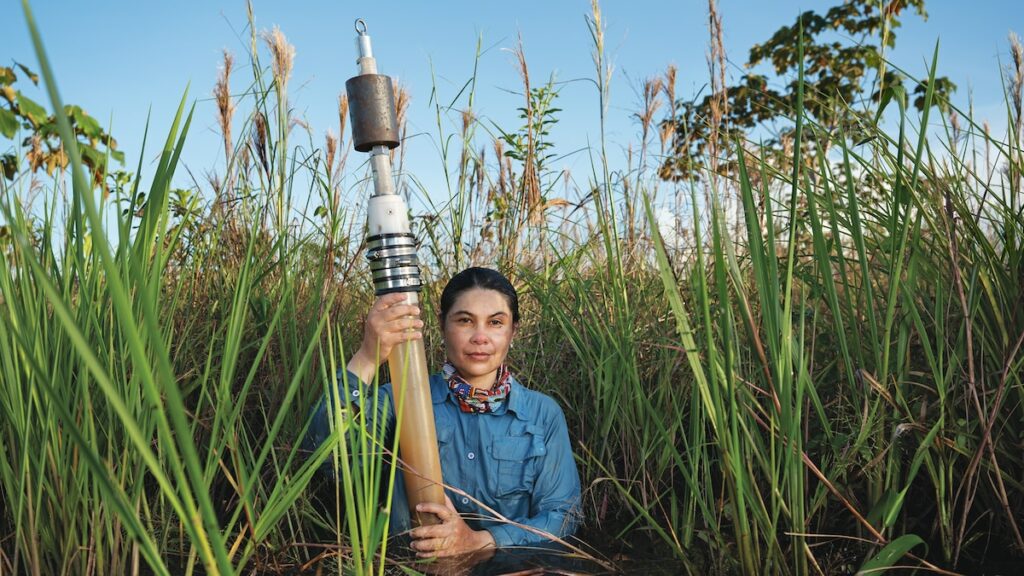She’s monitoring three sites: one where gold mining is sanctioned and conducted with heavy machinery, a second where illegal mining is extensive, and a third that’s protected from mining and serves as the control in her experiment. For each, she collects soil, water, sediment, and plankton to determine the chemistry of the samples and the concentration of mercury.
While the toxic metal is naturally occurring and gold mining is not the sole source, Angel-Amaya expects that mercury levels will be higher downstream of the two mining sites—and potentially throughout the Amazon watershed. The mining in this region is artisanal and small-scale, and often uses liquid mercury to extract gold from alluvial sand. When the mercury-gold amalgam is heated, the toxin evaporates but stays in the environment. The process is fast and relatively cheap, and it remains legal in Peru despite mercury’s harmful effects on human health.
(In the heart of the Amazon, this pristine wilderness shows nature’s resilience.)
Angel-Amaya would like to see mercury-free gold become a certified commodity, in the same way that conflict-free diamonds have found a market. So she’s testing a new application for a handheld laser gun that would verify that a piece of gold was rendered without mercury. If the technology succeeds, it could help ensure that customers receive a better-sourced product—and incentivize artisanal miners to pursue certification and a premium price.
The challenges in Angel-Amaya’s fieldwork are many. In addition to the science, there are long, hot days; mosquitoes; snakes; and questions from miners who are suspicious of her motives. And yet she loves being there. Someday her work may inform restoration efforts at polluted sites. “It’s not going to be back as it was before,” Angel-Amaya says, “but maybe it could become something else.” At the abandoned mining ponds, nature’s resilience amazes her. Not long ago, she spotted a caiman, and she’s seen tapir and jaguar prints at the water’s edge. It’s enough to give her hope.
>>> Read full article>>>
Copyright for syndicated content belongs to the linked Source : National Geographic – https://www.nationalgeographic.com/environment/article/amazon-river-basin-mercury-jennifer-angel-amaya
